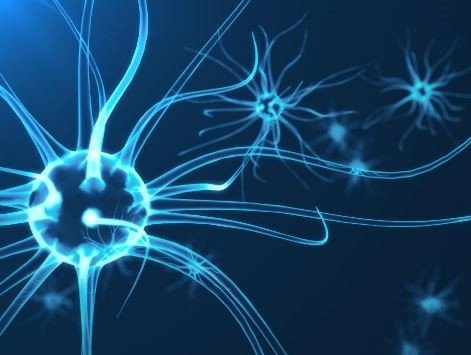You might think that scientists have the human body pretty well figured out. They’ve only been studying it for, I don’t know, centuries. But a study published this week in the journal Nature Neuroscience documents a piece of ourselves that we didn’t know existed until now: a brand-new type of brain cell.

This new neuron isn’t found in mice and the researchers think it may be unique to primates, or even the human species—and that means it could help us understand what makes us who we are. Two research groups—one from Hungary, and one from the US—actually discovered this new neuron type at about the same time using very different techniques. When they realized this, they teamed up and worked together to publish their results. Both groups were studying neurons in a part of the brain called the cortex, the brain’s outermost layer, which is crucial to human consciousness. Over at the University of Szeged in Hungary, the researchers were taking the more traditional route of examining the shape of the neurons in living tissue and seeing how they respond to electrical pulses. Different types of neurons look different and respond to currents in different ways. It’s the kind of work that’s been done for decades, but usually on animal brains—because, well, there just isn’t a whole lot of access to live human brain tissue. But the team partnered with doctors to get human samples from patients undergoing brain surgeries—which is how they found what they’ve dubbed the rosehip neuron. It has a dense bundle of axons—the nerve fibers that conduct electrical impulses—clustered around the cell’s center. Hence ‘rosehip’, because the shape reminded them of a rose after its petals are shed. Meanwhile, researchers with the Allen Institute for Brain Science in Seattle were taking a newer approach to examining neurons, called transcriptomics.

That’s the study of the genes expressed by cells, which can tell us a lot about what makes those cells unique. Using tissue samples from two donated brains, they performed single-nucleus RNA sequencing, a type of genetic analysis that let them identify the genes expressed by individual cells. The technique has only been possible for the past five years or so. And they found a pattern of gene expression different from all other neurons studied before. After comparing notes, the two teams realized the weirdly shaped neurons were the ones with this unique gene expression pattern. And together, they were able to hammer out a few more details about them. Rosehip neurons are part of a larger category of brain cells called inhibitory neurons, which regulate the activity of other neurons as they transmit information in the brain. They’re sort of like the brain’s traffic cops, controlling the flow of information from one place to another so that everything runs smoothly. It’s not clear exactly what these rosehip neurons control, but their shape may provide a clue. They form connections with another type of brain cell called pyramidal neurons. These are part of the larger category of excitatory neurons, which basically do the opposite of inhibitory ones: they send signals that make other neurons more likely to fire. But rosehip neurons only attach to a very specific part of pyramidal neurons, which could mean that they regulate information flow in a very specific way. We don’t yet know exactly what they regulate, or how. But it might be something not found in other animals. When the team compared their neuron to the varieties of neurons found in mouse brains, they couldn’t find anything similar. It’s hard to say for sure that rosehip neurons are only found in humans or other primates, because it’s not like scientists have checked the brains of every single other animal. But they definitely don’t seem to exist in rodents, at least. And that means they might play a role in brain processes we don’t see in other animals. If nothing else, rosehip neurons are the latest evidence that as useful as lab mice can be, they aren’t perfect models, especially when it comes to studying psychiatric and neurological diseases. Next, the researchers want to look for rosehip neurons in other parts of the brain, which might give them more insight into what the neurons actually do. They also want to examine brain tissue samples from people with psychiatric disorders to see if their rosehip neurons differ in any way from the ones in healthy brains. Now that they’ve found this new type of neuron, they want to learn everything about it—especially if it’s part of what makes us human.

Source
Plagiarism is the copying & pasting of others work without giving credit to the original author or artist. Plagiarized posts are considered spam.
Spam is discouraged by the community, and may result in action from the cheetah bot.
More information and tips on sharing content.
If you believe this comment is in error, please contact us in #disputes on Discord
Downvoting a post can decrease pending rewards and make it less visible. Common reasons:
Submit